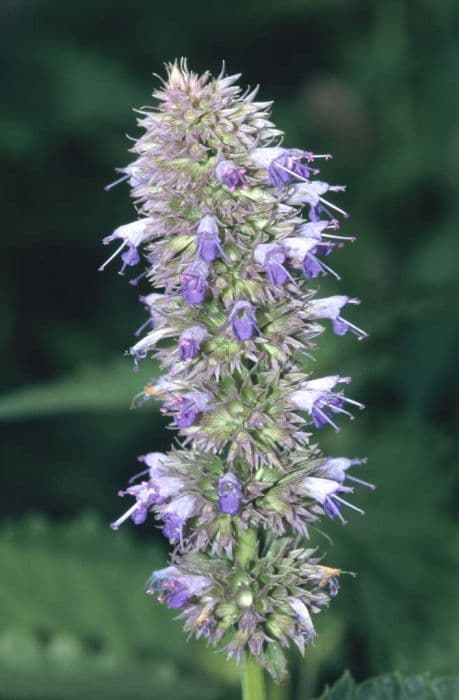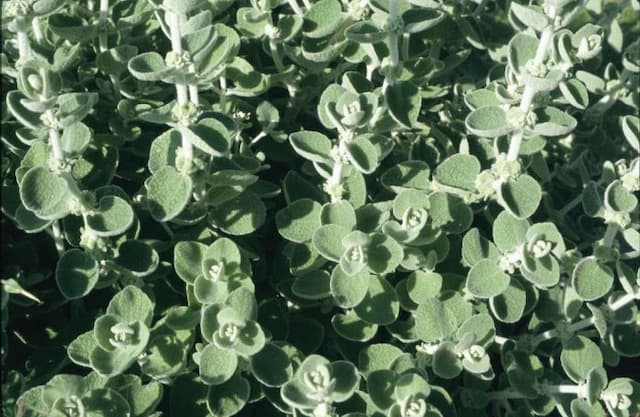Java Glorybower Clerodendrum × speciosum

ABOUT
Clerodendrum × speciosum, also known as the Java glorybower, is a striking and ornamental plant that boasts a lush and vibrant appearance. The most striking feature of the Java glorybower is its blossoms, which typically exhibit a vibrant red to deep pink color. The flowers are clustered in terminal panicles that are showy and inflorescences that can be quite large, creating a dramatic display. Each individual flower is tubular, flaring open at the mouth into five distinct lobes that can be somewhat ruffled at the edges, enhancing the overall flamboyance of the bloom. The leaves of the Java glorybower add a lush backdrop to the bright flowers. They are broad and heart-shaped, with a slightly pointed tip and a smooth or subtly textured surface. The foliage is typically a deep green, which contrasts beautifully with the red of the flowers, and the edges of the leaves are gently serrated. The plant often has a spreading habit, with stems that bear leaves and flowers extending outward, creating a full and bushy appearance. Together, the large, showy flowers and the verdant foliage make Clerodendrum × speciosum a captivating addition to gardens and landscapes where its decorative qualities can be admired, though the plant's overall dimensions remain unmentioned.
About this plant
 Names
NamesFamily
Lamiaceae.
Synonyms
Java Glory Bean, Red Bleeding Heart Vine, Flaming Glorybower, Pagoda Flower.
Common names
Clerodendrum × speciosum.
 Toxicity
ToxicityTo humans
The Clerodendrum × speciosum, commonly known as the Java glorybower, is not widely recognized for being toxic to humans. While there is limited information on the precise effects of this plant on human health, as a general precaution, it is advisable not to ingest parts of ornamental plants due to potential adverse reactions or unknown toxicity levels. In the event that any part of the Java glorybower is ingested and adverse symptoms are experienced, it is important to seek medical advice promptly.
To pets
The Clerodendrum × speciosum, also known as Java glorybower, has not been distinctly categorized as toxic to pets. However, due to the lack of specific information regarding its toxicity to animals, it is recommended to prevent pets from ingesting the plant. If a pet does consume any part of the Java glorybower and exhibits signs of distress or poisoning such as vomiting, diarrhea, or unusual behavior, it is crucial to consult a veterinarian immediately. While the exact consequences and symptoms of ingestion are not clearly defined, cautious avoidance is advised.
 Characteristics
CharacteristicsLife cycle
Perennials
Foliage type
Deciduous
Color of leaves
Green
Flower color
Red
Height
10 feet (3 meters)
Spread
6 feet (1.8 meters)
Plant type
Shrub
Hardiness zones
9
Native area
Southeast Asia
Benefits
 General Benefits
General Benefits- Ornamental Value: The plant, commonly known as Java Glorybower, has vibrant red flowers that add aesthetic appeal to gardens and landscapes.
- Shade Provider: Java Glorybower can grow to a substantial size, offering shade in garden areas during hot weather.
- Habitat for Wildlife: It attracts hummingbirds, butterflies, and other pollinators, which are essential for the ecosystem.
- Erosion Control: The plant's root system can help in stabilizing soil and preventing erosion.
- Privacy Screen: When grown in groups, Java Glorybower can act as a natural privacy screen or hedge.
- Cultural Significance: It is often used in traditional ceremonies and garden designs in certain cultures, adding a layer of cultural value.
 Medical Properties
Medical Properties- Antimicrobial: Clerodendrum × speciosum has been studied for its potential antimicrobial properties against certain strains of bacteria and fungi.
- Antioxidant: The plant may contain compounds with antioxidant activity, which can help neutralize harmful free radicals in the body.
- Anti-inflammatory: Some studies suggest the presence of anti-inflammatory compounds in Clerodendrum × speciosum that may help in reducing inflammation.
 Air-purifying Qualities
Air-purifying QualitiesThis plant is not specifically known for air purifying qualities.
 Other Uses
Other Uses- Clerodendrum × speciosum, commonly known as Java Glorybower, can be used as a natural dye, with its vividly colored flowers potentially being used to dye fabrics or paper materials.
- The leaves of the Java Glorybower may be utilized in creating decorative prints by using them as templates or for leaf painting activities in crafting.
- The sturdy stems can serve as natural stakes or supports for other climbing plants in the garden, helping those with weaker stems to stand tall.
- Its fast-growing and dense foliage can be planted as privacy screens or to create a live fence to delineate garden spaces or property lines.
- The plant may be included in educational activities, such as biology classes studying plant morphology or pollination, due to its interesting flower structure.
- Whole branches can be used in large floral arrangements or displays for events, providing a tropical and lush backdrop.
- The strong fragrance of the flowers can be harnessed in making potpourris or scent bags to naturally freshen up a room or a wardrobe.
- Java Glorybower's fallen flowers might be collected and placed in bowls of water to create simple, aromatic floating flower decor.
- If dried properly, parts of the plant could be used for crafting materials in creating wreaths and other dried floral decorations.
- The plant's distinct and ornate flowers can be used as natural confetti for outdoor celebrations, offering a biodegradable alternative to paper or plastic varieties.
Interesting Facts
 Feng Shui
Feng ShuiThe Java Glorybower is not used in Feng Shui practice.
 Zodiac Sign Compitability
Zodiac Sign CompitabilityThe Java Glorybower is not used in astrology practice.
 Plant Symbolism
Plant Symbolism- Beauty and Splendor: The Java Glorybower, or Clerodendrum × speciosum, is renowned for its striking red flowers and lush green foliage, making it a symbol of natural beauty and visual appeal. Its ornate blossoms can represent an appreciation for the beautiful things in life.
- Unity: Java Glorybower is a hybrid species, signifying the coming together of different elements to create something new and beautiful. This union symbolizes harmony and the blending of diverse aspects to achieve unity.
- Prosperity: In some cultural traditions, lush and vibrant plants like the Java Glorybower are associated with growth and abundance, thereby symbolizing prosperity and wealth.
- Peace and Tranquility: The plant's graceful presence and the way its flowers seem to effortlessly float above the foliage may evoke feelings of peace and tranquility, making it a symbol for calmness and serenity.
 Water
WaterFor the Clerodendrum × speciosum, also known as the Java Glory Vine, it's important to keep the soil evenly moist during its growing season, which is spring through fall. Watering should be done when the top inch of soil feels dry to the touch—which often equates to once a week, depending on environmental conditions. Generally, this will be about one to two gallons per week for an average-sized plant. During winter, reduce watering to every other week to prevent root rot from overwatering as the plant's water requirements lessen. Avoid leaving standing water in the saucer, as this can lead to fungal infections and other health issues for the plant.
 Light
LightThe Java Glory Vine thrives in bright, indirect light, making it ideal for a spot that receives morning sun and afternoon shade, or a location bathed in diffused light filtered through a sheer curtain. Direct, harsh sunlight can scorch the foliage, so it's essential to protect the plant from the intense midday sun. A spot beside an east or west-facing window could offer ample light without the harsh effects of direct exposure to the southern sun.
 Temperature
TemperatureThe Java Glory Vine prefers warm conditions and should be kept in temperatures ranging from 60 to 75 degrees Fahrenheit for optimal growth. It can survive in temperatures as low as 50 degrees Fahrenheit, but it's not frost-tolerant and should be shielded from temperatures below that threshold. Ideal conditions for this tropical plant include maintaining the environment within the aforementioned temperature range year-round.
 Pruning
PruningPrune the Java Glory Vine to maintain its shape and encourage bushier growth. It's best to prune in late winter or early spring before new growth begins. This typically involves trimming back leggy stems and removing any dead or damaged growth to promote a more aesthetically pleasing form. Pruning can be done annually, and occasionally thinning out older stems can rejuvenate the plant.
 Cleaning
CleaningAs needed
 Soil
SoilThe Java Glorybower thrives in well-draining, fertile soil with a mix of two parts peat or coco coir, one part perlite or sand, and one part compost. The ideal soil pH should be mildly acidic to neutral, in the range of 6.0 to 7.5.
 Repotting
RepottingJava Glorybower should be repotted every 2-3 years or when it has outgrown its current pot to ensure continued growth and prevent rootbound conditions.
 Humidity & Misting
Humidity & MistingJava Glorybower prefers a high humidity environment, ideally above 50%, which is often achieved in a greenhouse or by using humidity trays or indoor humidifiers.
 Suitable locations
Suitable locationsIndoor
Provide bright indirect light and keep soil evenly moist for Java Glorybower.
Outdoor
Plant in partial shade and protect Java Glorybower from cold drafts.
Hardiness zone
9-11 USDA
 Life cycle
Life cycleClerodendrum × speciosum, commonly known as Java Glorybower, begins its life cycle when a seed germinates, typically requiring warm temperatures and moist soil conditions. Upon germination, the seedling emerges, developing a root system and the first pair of true leaves. As it matures into a vegetative phase, the plant experiences rapid growth of stems and leaves, forming a bushy habit. During the reproductive stage, Java Glorybower produces clusters of red to deep pink flowers, attracting pollinators and resulting in seed formation if pollination occurs. Following pollination, seeds develop inside the fruits, which eventually fall to the ground or are dispersed by animals, completing the cycle. The plant can also propagate vegetatively through cuttings or division, which allows for faster multiplication and preservation of desired traits.
 Propogation
PropogationPropogation time
Spring to early summer
The Bleeding Heart Vine (Clerodendrum × speciosum) is commonly propagated through stem cuttings. This method thrives best when performed in the late spring or early summer, which is the plant's active growing season. To propagate Bleeding Heart Vine using stem cuttings, a healthy, non-flowering stem about 4 to 6 inches (10 to 15 cm) long should be selected. The cutting should include at least two sets of leaves, while the lower leaves are removed to expose the nodes. The cut end is dipped in rooting hormone to enhance root development and then placed in a well-draining potting mix or a container with water. The cutting should be kept in a bright, indirect light area, ensuring the soil remains consistently moist but not soggy until the roots have formed, which typically takes several weeks. Once established, the new plants can be transferred to their permanent locations.









